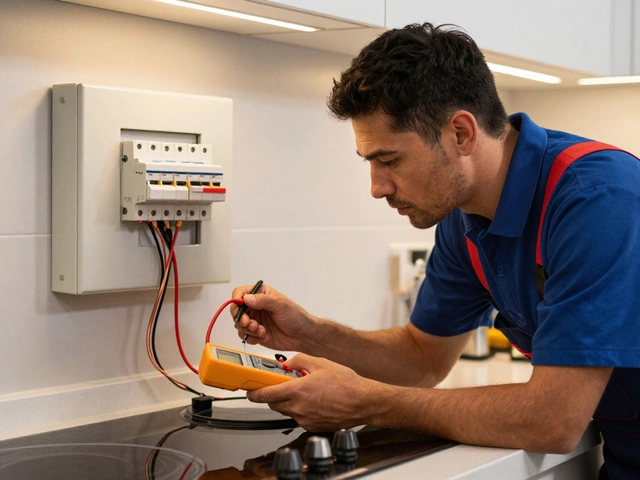Can I Service My Boiler Myself? What to Know Before You Try
June 6 2025Cleaning Extractor Fans: Simple Steps for Better Air Quality
Do you notice stale smells or weaker airflow in your kitchen or bathroom? Chances are the extractor fan needs a good clean. A dusty fan can lose power, make noise, and even become a fire risk. The good news? You don’t need a professional for most jobs – just a few tools and a bit of time.
Why Clean Your Extractor Fan?
When grease, hair, and skin flakes build up on the fan blades and filter, the motor works harder. That extra strain raises your electricity bill and shortens the fan’s life. Plus, a dirty fan spreads mold spores and cooking fumes back into the room, which isn’t great for health.
Regular cleaning (about every three months for kitchens, six months for bathrooms) keeps the fan quiet, efficient, and safe. It also helps you spot early signs of wear, like wobbling blades or a burnt smell, before they turn into costly repairs.
Step‑by‑Step Cleaning Process
1. Turn off power. Flip the circuit breaker or unplug the fan to avoid any shock. Safety first.
2. Remove the cover. Most fans have a snap‑on or screwed‑on grill. Use a screwdriver if needed, then lift the cover away.
3. Clean the filter. If your fan has a metal or charcoal filter, soak it in hot, soapy water for 10‑15 minutes. Scrub gently with a soft brush, rinse, and let it dry completely. Plastic filters can be washed the same way, but avoid harsh chemicals.
4. Dust the blades. Hold the fan blades with a cloth to keep them from wobbling. Use a soft brush or a vacuum with a brush attachment to remove dust and grease. For stubborn grime, spray a little kitchen degreaser on a cloth and wipe the blades.
5. Check the motor and housing. Look for any buildup around the motor vents. A quick blow with a canned air duster clears out dust that can overheat the motor.
6. Reassemble. Put the filter back, snap the cover on, and secure any screws. Turn the power back on and test the fan. It should run smoother and sound quieter.
If you notice any rattling, the fan might be loose, or the motor bearings could be wearing out. Tighten any loose screws and, if the noise persists, call a qualified engineer – especially if you hear a humming or burning smell.
Keeping a cleaning schedule in your calendar makes the task feel less like a chore. Set a reminder on your phone for the next clean, and you’ll notice an immediate boost in airflow.
Remember, a clean extractor fan does more than just whisk away steam. It protects your home’s structure from moisture damage, reduces mold risk, and keeps your kitchen smelling fresh. A few minutes of maintenance now saves you from expensive repairs later.
Got a stubborn grease build‑up that won’t quit? Try mixing equal parts water and white vinegar in a spray bottle. Let it sit for a few minutes before wiping – the acidity breaks down grease without harsh chemicals.
Finally, if you ever feel unsure about opening the fan or dealing with electrical parts, don’t gamble. A local Bedford gas engineer can safely check the wiring and motor, giving you peace of mind while keeping your fan in top shape.
 5 Dec
5 Dec
Step-by-Step Guide to Servicing Your Extractor Fan Efficiently
Extractor fans are an essential part of maintaining good air quality and reducing moisture in areas like kitchens and bathrooms. Regular maintenance can prevent a build-up of grime and ensure that the fan runs efficiently. This article provides a comprehensive guide on how to service an extractor fan, including cleaning, identifying issues, and performing minor repairs. With practical tips and best practices, homeowners can keep their fans running smoothly and extend their lifespan.
Read More...



